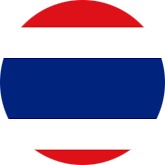Introduction :
Progress in the development of high performance thermal systems has stimulated interest in methods to improve heat transfer, popularly called “heat transfer augmentation”. It has become second generation heat transfer technology. New techniques are primarily employed in a variety of thermal apparatuses encountered in process and chemical industries, including oil refineries and gas production plants as well as in power generation plants (thermal, nuclear, solar, geothermal, ocean thermal, etc.).
This course describes the most important and practical issues related to the optimum selection of various types of augmentation techniques employed for heat exchangers working with single-phase fluids (heaters or coolers) or with phase change fluids (evaporators, reboilers, condensers, etc.) The course will briefly survey basics of fluid flow and heat transfer in thermal apparatuses and continue with a detailed explanation of the most efficient passive (extended surfaces, fins, swirl flow devices, etc.) and active techniques (surface and fluid vibration etc.) for single phase flow as well as for fluids with phase-change (two-phase flows). Performance evaluation criteria (PEC) related to these techniques, as well as technical and economical issues, such as manufacturing costs, problems in operation, maintenance issues and others will be covered.
Highlights of the course include:
- Basics of selecting the most appropriate heat augmentation technique for the given application: augmentation techniques improve heat transfer for the price of increased pumping power
- Guidance for performance evaluation criteria which are basis for selection
- Practical real-life examples where finned tubes and tube inserts require careful operation and maintenance
- Interplay of various influencing design parameters: two or more techniques can work together as compound augmentation
- Economical issues: cost and benefit analysis
Course Objective :
This course will enable the participants to achieve the following:
- Understanding of heat transfer processes and fluid flow in thermal equipment in order to apply suitable heat augmentation techniques
- Familiarity with principles of thermal design of heat exchangers
- Selection of optimal heat transfer augmentation techniques for a given industrial application
- Skill in estimating the degree of deterioration and inefficiency of heat exchangers and the ways to improve it by heat augmentation method
Course Outline :
Day One : Overview of Heat Transfer Equipment in the Process Industry
- Thermal Efficiency of Heat Transfer equipment
- Performance Indicators
- Analysis of Costs: Operating and Maintenance costs
- Need for Heat Transfer Augmentation
- Classification of Augmentation Techniques
- Performance Evaluation Criteria (PEC)
Day Two : Basics of Heat Transfer and Fluid Flow Mechanisms in Thermal Equipment
- Conduction Heat Transfer - Concept of Thermal Resistance
- Basics of Fluid Flow in various Geometries
- Pressure drop calculation and selection of Pumps and Compressors
- Convection Heat Transfer
- Heat transfer with phase change : Boiling and Condensation
- Solutions to various Heat Transfer problems
Day Three : Augmentation Techniques for Single Phase Fluid Flow
- Most Efficient Passive Techniques
- Extended Surfaces and Fins
- Swirl Flow Devices and Fluid Additives
- Most Efficient Active Techniques
- Stirring devices and Rotating surfaces
- Surface and Fluid Vibration
- Applications of Finned Surfaces in Forced Convection
Day Four : Augmentation Techniques for Fluids with Phase Change
- Most Efficient Passive Techniques
- Treated and Rough Surfaces
- Extended Surfaces and Displaced Enhanced Devices
- Swirl Flow Devices and Fluid Additives
- Most Efficient Active Techniques
- Surface and Fluid Vibration
- Electro-magnetic Field
- Solutions to problems of Boiling and Condensation
Day Five : Technical and Economical Issues
- Application of Compound Augmentation
- Cost-benefit Analysis: Manufacturing Costs vs. Benefits of Augmentation Techniques
- Problems in Operation
- Maintenance Issues
- Future Trends
























































